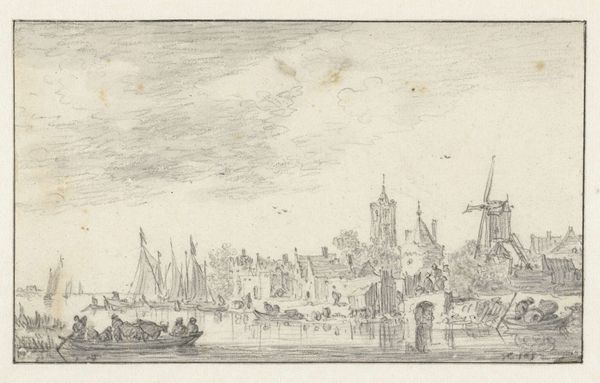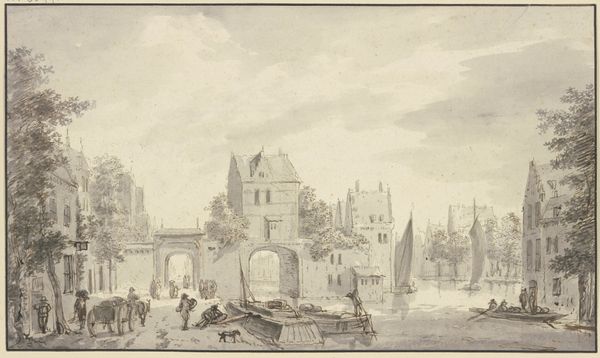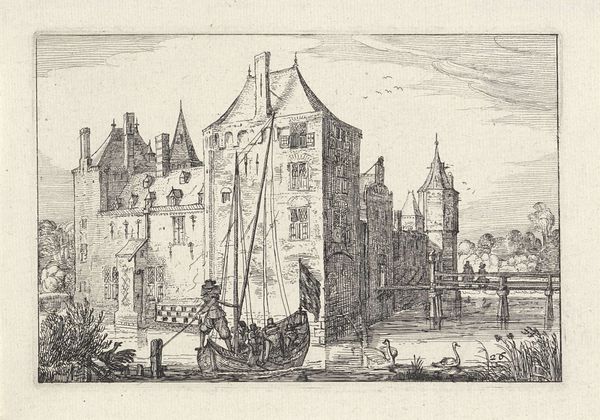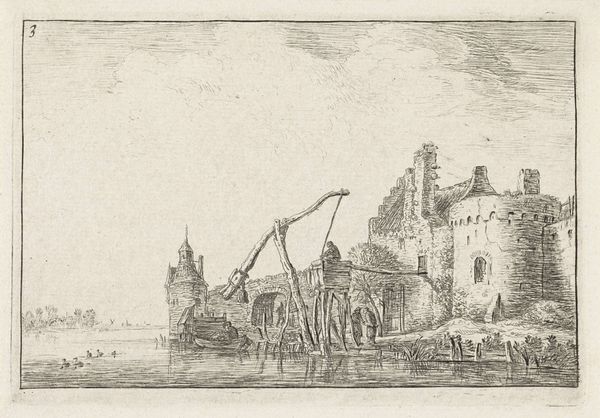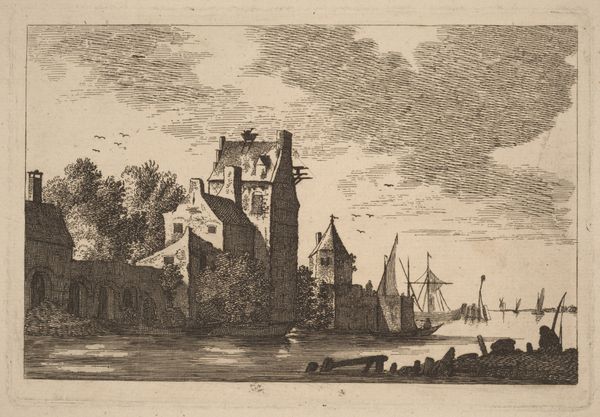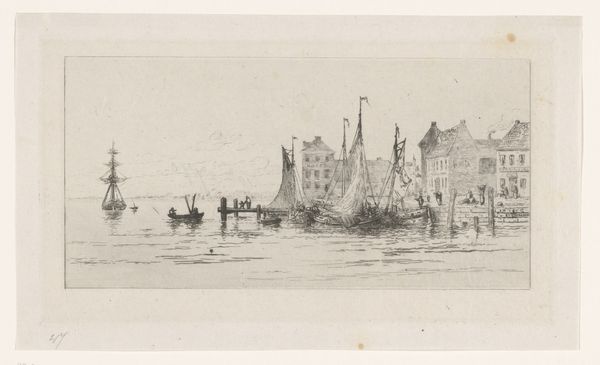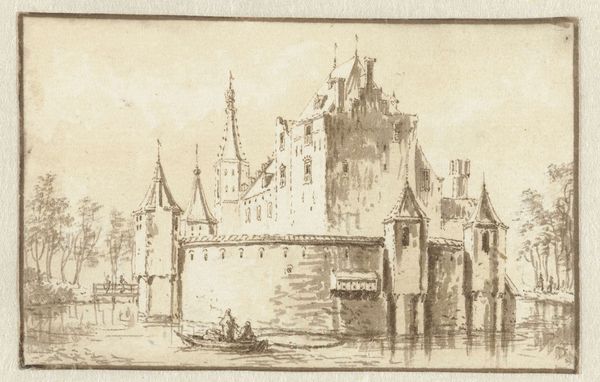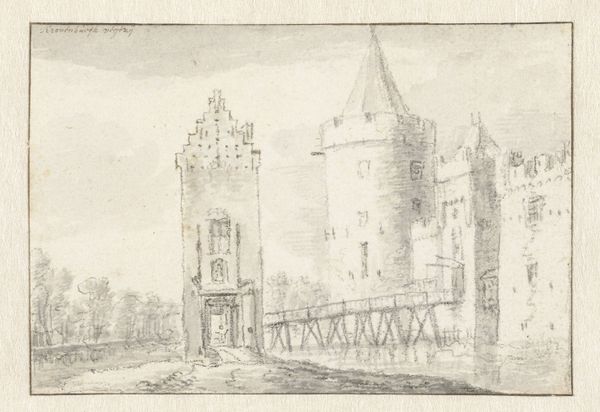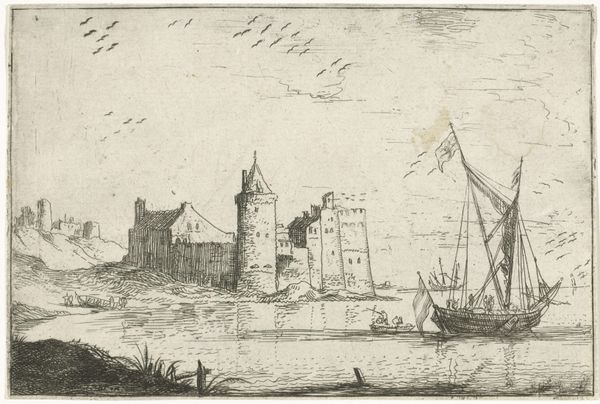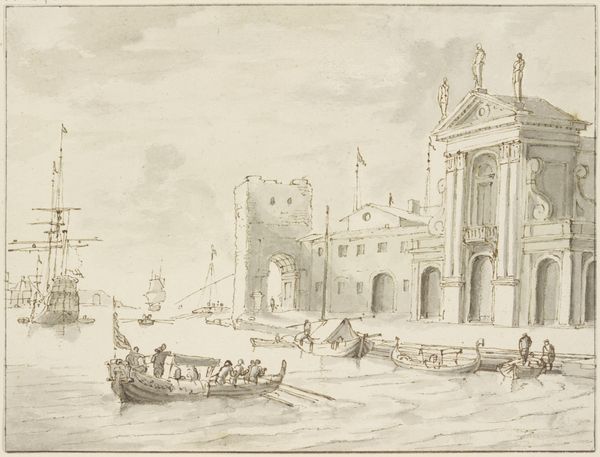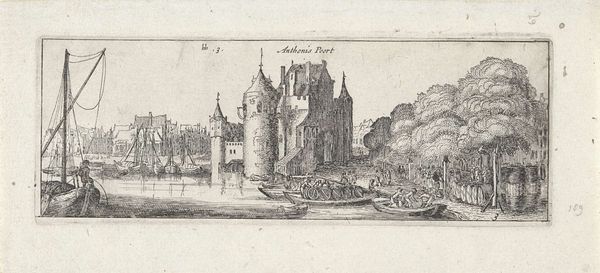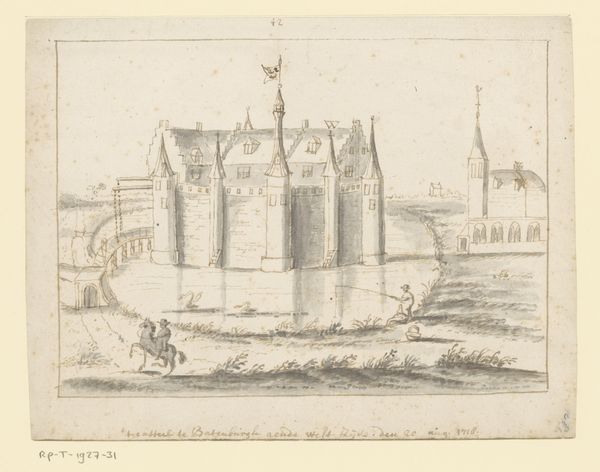
drawing, print, etching, ink, pen
#
drawing
#
quirky sketch
# print
#
pen sketch
#
etching
#
pencil sketch
#
old engraving style
#
landscape
#
personal sketchbook
#
ink
#
sketchwork
#
pen-ink sketch
#
line
#
sketchbook drawing
#
pen
#
cityscape
#
genre-painting
#
storyboard and sketchbook work
#
sketchbook art
#
realism
Dimensions: height 70 mm, width 111 mm
Copyright: Rijks Museum: Open Domain
Editor: So, here we have Henri Adolphe Schaep's "Ontvangst van passagiers op een schip," likely made between 1841 and 1870. It appears to be an etching, maybe with some ink or pen work. It’s got a lovely, almost folksy feel to it. What catches your eye? What can you tell us about it? Curator: What I see is a visual document reflecting a very specific moment in social history. Etchings like these weren't just landscapes; they were often records of burgeoning trade, travel, and social mobility. Notice the figures disembarking. Consider who they might be – are they merchants, migrants, or members of the growing middle class? The act of ‘receiving’ passengers itself speaks to the infrastructures being built to accommodate increasing movement and exchange. Editor: That's a really interesting point about social mobility. It made me consider: Were the ports themselves impacted? Curator: Precisely. How does this image reinforce or challenge existing power dynamics? Who is granted access to these spaces, and who is excluded? Also, think about the ships – they're not just modes of transport, but powerful symbols of colonialism and global trade networks. We should ask ourselves about the ethical implications tied to what looks like a pleasant harbor scene. Does the picture celebrate an achievement at the expense of not showing the harsh circumstances of others? Editor: That's something I hadn't considered, the power dynamics inherent in something seemingly so simple. Curator: These seemingly straightforward images can offer valuable insights into complex social and political issues. Thinking about these helps give dimension to what at first looks quaint and lovely. Editor: I appreciate you broadening my perspective!
Comments
No comments
Be the first to comment and join the conversation on the ultimate creative platform.
